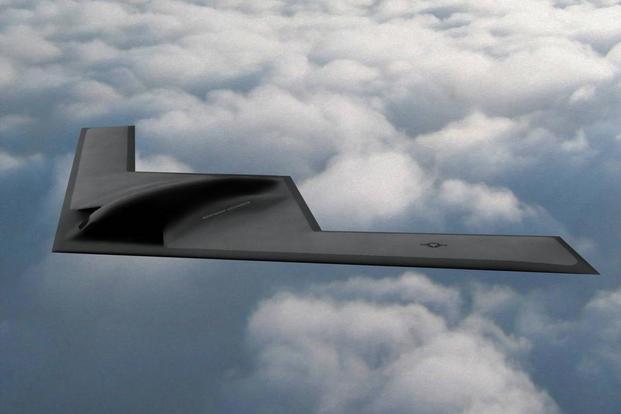The B-21 Long Range Strike Bomber program may be shortchanged or potentially delayed if Congress continues to pass continuing resolution after continuing resolution instead of buckling down to pass a formal appropriations bill, the undersecretary of the Air Force said Thursday.
The B-21 -- the Pentagon's latest classified, multi-billion-dollar program in development by Northrop Grumman Corp. -- will suffer if the budget remains capped at the previous year's levels under a CR, said Matthew Donovan, who assumed his position in August.
"A long-term CR will limit execution of the engineering, manufacturing and development phase, the EMD phase of the B-21," said Donovan, a former F-15C Eagle pilot.
"We would be limited to the [fiscal 2017] funding level, which is far below the FY18 budget request," he said at an Air Force Association event on Capitol Hill. "This will have the effect of postponing delivery of the critical strategic capability to the joint warfighter."
Related content:
- Air Force: We Want 165 Bombers, Not Just B-21s
- Air Force May Cut Flying Hours Due to '$1.3 Billion Math Problem'
- The First Rule of B-21 Is You Do Not Talk About B-21
The Air Force awarded Northrop the contract, initially worth $21.4 billion, in 2015. Program costs are expected to exceed $55 billion.
The first B-21 is still expected to reach initial operating capability in the mid-2020s, Donovan said.
"Our FY 2017 budget is $1.3 billion, but our FY18 request is $2 billion, so if we're not able to ramp up on our schedule for the acquisition program baseline, then of course it's going to have an impact on it," he said. "We can't make up that time."
The B-21, which will eventually replace a portion of the B-1 Lancer fleet, will have both nuclear and non-nuclear roles. The B-21 will be able to go after multiple targets conventionally but be capable of carrying out only one nuke drop at a time, the head of U.S. Strategic Command said last year.
"A penetrating bomber, like the B-21, that can only drop gravity bombs and attack how many targets at once with a nuclear weapon? The answer is one," Gen. John Hyten told audiences during a speech at the Hudson Institute in Washington, D.C., in September.
"That means that every B-21 only goes after one target" in a nuclear scenario, he said.
Reviewing Air Force Programs
Donovan reiterated the service's need to review all of its programs before the fiscal 2020 budget is drafted.
"In preparation for the fiscal year 2020 bill, we're executing a zero-based review of programs, budget lines and manpower authorizations," he said. The Air Force announced the review in December.
"This hasn't been done in over two decades in the Air Force," said Donovan, who prior to taking the undersecretary position was the majority policy director for the Senate Armed Services Committee.
He said it's not so much about the budget itself, but more about strategy going forward.
"The idea here is to get after the relevancy of what we're doing -- we'll look at each and every program requirement to see if it's increasing our lethality for the future threat environment," he said.
When asked if one particular or over-budgeted program -- such as the F-35 Joint Strike Fighter -- caused the review, Donovan said, "No...it's just something, to be honest … because of the way the [Planning, Programming Budgeting and Execution] is set up, senior leaders don't really get a lot of visibility into the majority of the budget because they're only looking at the changes from [the previous] year. So I think it's time."
-- Oriana Pawlyk can be reached at oriana.pawlyk@military.com. Follow her on Twitter at @Oriana0214.










